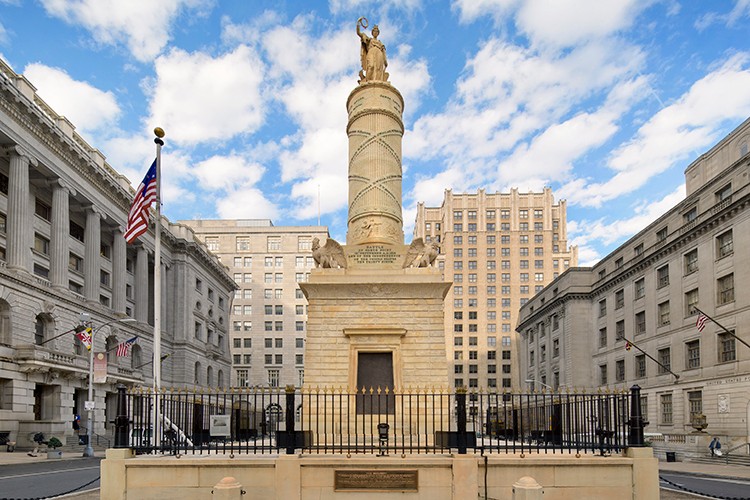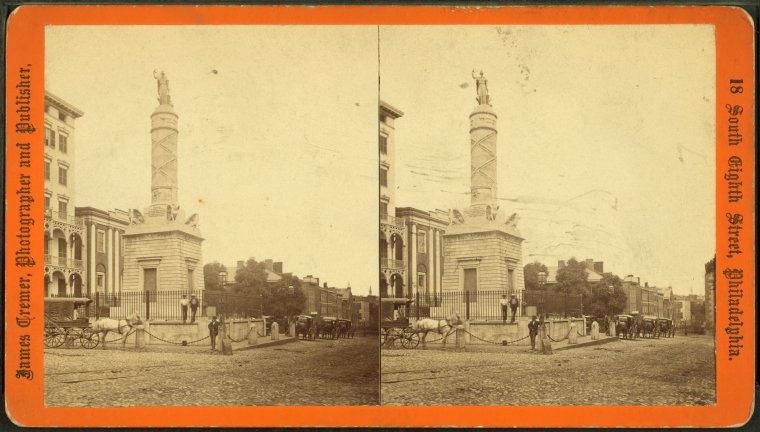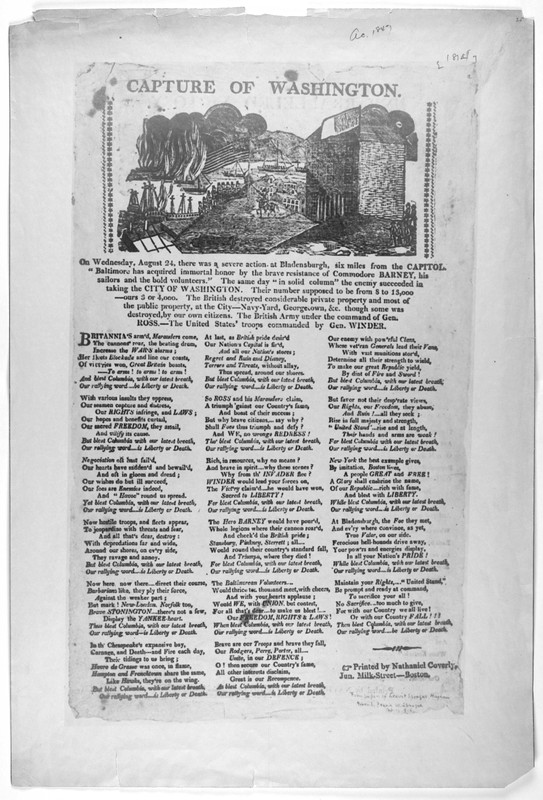Baltimore Battle Monument
Introduction
Text-to-speech Audio
Images
Baltimore Battle Monument

Baltimore Battle Monument, photographed by James Cremer (source: New York Public Library Digital Collections)

"Baltimore has acquired immortal honor by the brave resistance of Commodore Barney." 1814 leaflet regarding the capture of Washington and the bravery of Baltimore. (Source: Library of Congress)

Backstory and Context
Text-to-speech Audio
The Battle of Baltimore occurred during the War of 1812, after the attack on Washington D.C. in 1814. While the attack on D.C. was happening, Baltimore prepared for the pending British attack on their harbor and city. Citizens erected a mile of barricades to defend the city and also worked to block the Inner Harbor. In addition to these preparations, federal troops were assisted by local citizens in preparing Fort McHenry for the attack by the British Navy.
Most remember the famous naval battle that inspired the lyrics to a poem that became America's national anthem, Francis Scott Key's "The Star-Spangled Banner." On September 12, British warships traveled up the Patapsco River to attack Fort McHenry and other defensive fortifications. Lyrics such as "and the rockets red glare! The bombs bursting in air!" describe the British attack. Meanwhile, troops also attempted to take the city by land. Nearly 4500 British troops arrived at North Point, an area close to the opening of the Patapsco River, and began an 11-mile journey to Baltimore. Baltimore was in danger of falling to the British.
The ships attacked Fort McHenry for 25 hours, but the fort’s commander, Major George Armistead, refused to surrender. Meanwhile, British troops faced American defenders in the Battle of North Point. The British suffered many losses in that battle, but were still able to reach Baltimore’s protective barricades. When they discovered the British loss at Fort McHenry, however, they chose to abandon their campaign.
The architecture of the monument blends Egyptian and Classical features. The
bottom is mainly in the Egyptian design, its two Black doors resembling a “cenotaph” or a sarcophagus. The columnn adopts the Classical Roman style of a fasces (bundle of rods), which stands
for unity. In 1827, President John Quincy Adams praised Baltimore as “the
Monumental City,” thanks to this monument and the Washington Monument.
Sources
"Battle Monument Conservation." City of Baltimore. Accessed February 09, 2017. http://archive.baltimorecity.gov/Government/BoardsandCommissions/HistoricalArchitecturalPreservation....
Clifford, James. "Battles that Saved America: North Point and Baltimore 1814." National Museum of the United States Army. July 16, 2014. Accessed September 02, 2017. https://armyhistory.org/battles-that-saved-america-north-point-and-baltimore-1814/.
Hayward, Mary Ellen, and Frank R. Shivers Jr, eds. The Architecture of Baltimore: An Illustrated History. Baltimore, MD: Johns Hopkins University Press, 2004. p. 80-81.
Kelly, Cindy. Outdoor Sculpture in Baltimore: A Historical Guide to Public Art in the Monumental City. Baltimore, MD: Johns Hopkins University Press, 2011. Especially p. 1-3.
